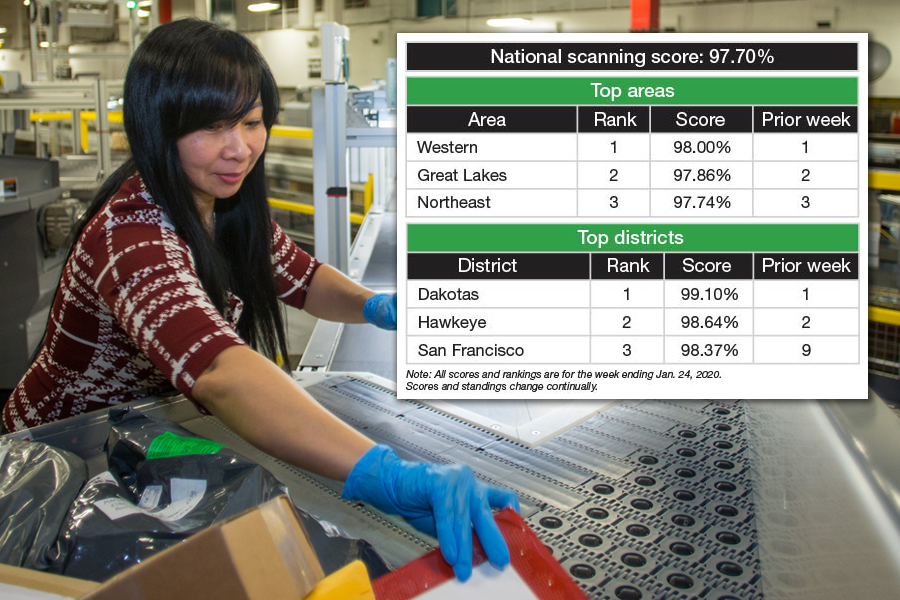Scanning snapshot. The Postal Service’s national scanning score slipped during the week ending Jan. 24, although several districts improved their standings.
The national score was 97.7 percent, down from 97.75 percent one week earlier. The top-ranked area was Western (98 percent), while the top-ranked district was Dakotas (99.1 percent).
Six districts improved their scores: eighth-ranked Greater South Carolina (98.26 percent, up 0.09 percent from one week earlier), No. 12 Seattle (98.21 percent, up 0.03 percent), No. 31 Portland (97.86 percent, up 0.31 percent), No. 39 South Jersey (97.69 percent, up 0.14 percent), No. 41 Suncoast (97.63 percent, up 0.05 percent) and No. 56 Chicago (97.2 percent, up 0.1 percent).
USPS has 67 districts.
Scanning data allows customers to track their mail and packages, which helps the organization deliver excellent service, boost loyalty and drive revenue.
To see the latest data, go to the Informed Visibility website and select “Customer Experience,” followed by “DES 2 Scan Performance.”
EPCRA reporting. Postal Service facilities that store certain quantities of hazardous chemicals must complete and submit the Emergency Planning and Community Right-to-Know Act (EPCRA), Tier II Form, by March 1 each year.
Reporting requirements apply to any location that stores threshold quantities of EPCRA-regulated chemicals. Regulated chemicals used by USPS include sulfuric acid in lead-acid batteries, gasoline, diesel fuel, heating oil, ice melt and anti-skid products.
The Sustainability Blue page has additional reporting instructions.
Got news? Email your submissions to uspslink@usps.gov.
